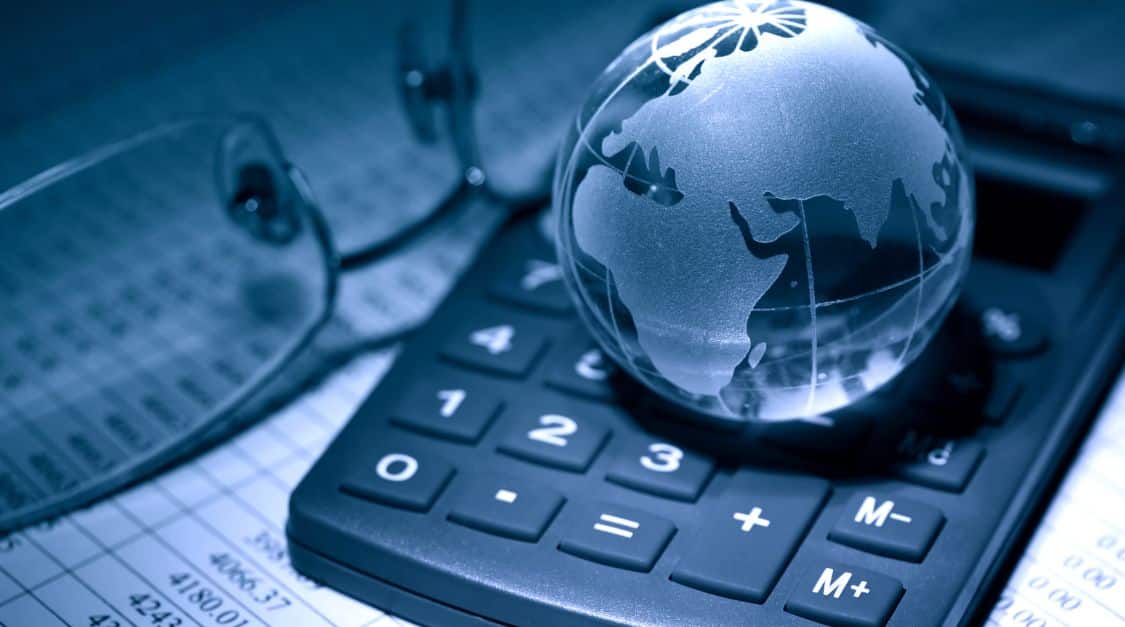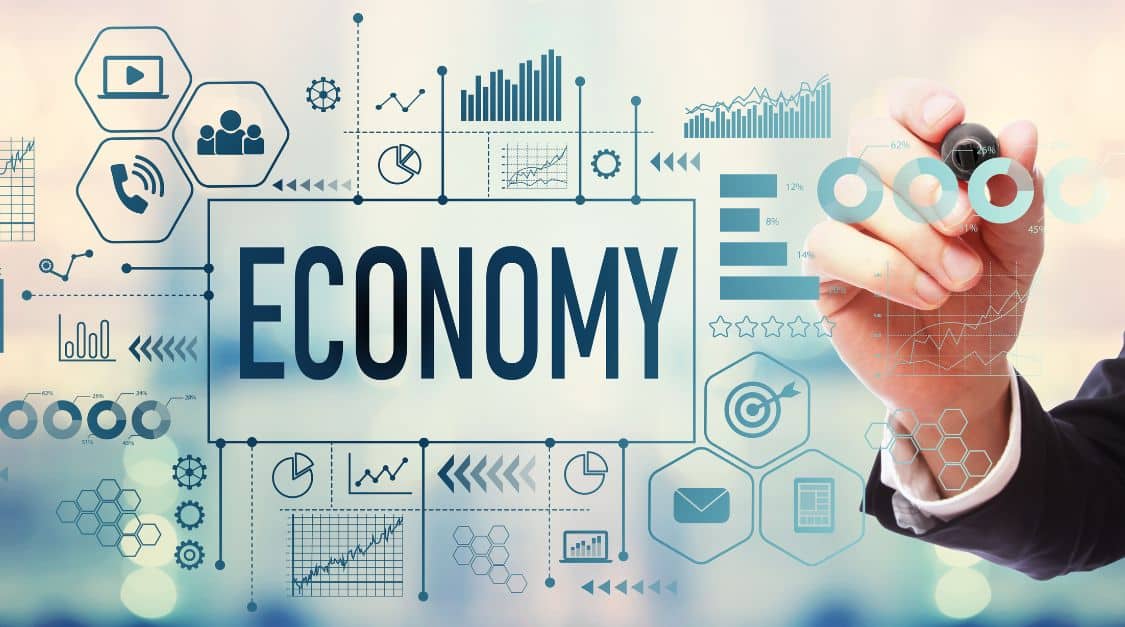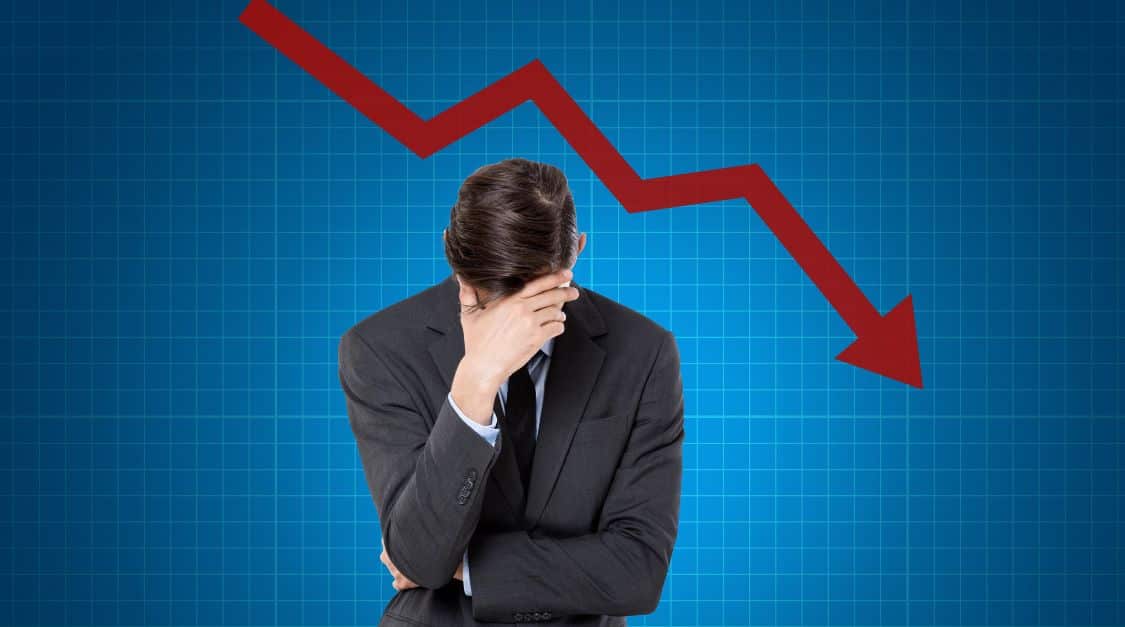It’s easy to mix up these two economic concepts, but understanding the difference is important if you want to stay informed about how the economy affects you.
Deflation and disinflation are both related to the decline of prices, but the degree of the decline makes them two distinct terms.
In this blog post, we’ll be looking at the differences between deflation and disinflation and exploring which one is more likely to have an impact on you.
What is deflation?
Deflation is a term used in economics to describe a decrease in the overall level of prices in an economy. Basically, it means that things are getting cheaper.
And who doesn’t love a good bargain, right? But while it may seem like a great deal for consumers, deflation can actually have some pretty negative effects on the economy as a whole.
So, why does deflation happen? Well, it can occur for a variety of reasons. Sometimes, it’s a result of a decrease in consumer demand. When people are buying less, businesses may have to lower their prices in order to sell their products.
Other times, it can be caused by a decrease in the cost of production, which leads to lower prices for goods and services.
The main difference between deflation and disinflation is the rate of the price decline.
Deflation refers to a sustained period of falling prices, while disinflation refers to a decrease in the rate of inflation. In other words, with disinflation, prices are still increasing, just at a slower pace.
So, why should you care about deflation? Well, for one, it can lead to lower wages and job losses.
When prices are falling, businesses may have to cut costs, which often means cutting jobs. This can make it harder to find employment and can also lead to lower wages for those who are still employed.
Additionally, deflation can make it harder for businesses to repay their debts, which can have ripple effects throughout the economy.
Differences between deflation and disinflation
Deflation and disinflation may sound similar, but they have some key differences that are important to understand.
While both terms are related to a decrease in prices, the rate of decline is what sets them apart.
Deflation refers to a sustained period of falling prices. It means that the overall level of prices in the economy is decreasing.
Think of it like getting a great deal on your favorite items at the store. It may sound like a dream come true for consumers, but in reality, deflation can have negative effects on the economy.
Disinflation, on the other hand, is a decrease in the rate of inflation. It means that prices are still increasing, just at a slower pace. Picture it like when your favorite store has a sale and the prices are marked down, but they’re still going up overall. Disinflation is more of a temporary slowdown in the rate of price increases.
So, why is this distinction important? Well, understanding the difference between deflation and disinflation can help you better understand the current state of the economy and how it may affect you.
It can also give you insights into potential risks and opportunities.
For example, during a period of deflation, businesses may struggle to make profits, leading to job losses and lower wages.
On the other hand, disinflation can signal a more stable and healthy economy, where prices are increasing, but at a manageable rate.
By staying informed about these economic concepts, you can make more informed decisions about your finances, investments, and even career choices.
So, let’s dive deeper into the effects of deflation and disinflation on the economy and explore how they can impact individuals and businesses.
Effects of deflation and disinflation on the economy
Deflation and disinflation can have significant effects on the economy as a whole. Let’s take a closer look at how these two concepts impact various aspects of the economy.
One of the primary effects of deflation is the potential for job losses and lower wages. When prices are falling, businesses may struggle to make profits, which can lead to cost-cutting measures, including layoffs.
This can make it more challenging for individuals to find employment and can also result in lower wages for those who remain employed. Additionally, deflation can make it difficult for businesses to repay their debts, as the value of money increases, making the burden of repayment more significant.
Disinflation, on the other hand, can have a more positive impact on the economy. A decrease in the rate of inflation can signify a more stable and healthy economy.
Prices may still be increasing, but at a slower pace. This can give businesses and individuals more time to adjust to changing economic conditions, reducing the risk of job losses and allowing for more stable wage growth.
Both deflation and disinflation can also impact consumer behavior. During periods of deflation, consumers may postpone purchases in anticipation of further price decreases.
This can lead to a decrease in overall consumer spending, which can have a negative impact on businesses and the economy as a whole.
On the other hand, disinflation may encourage consumers to make purchases before prices increase further, potentially boosting consumer spending and stimulating economic growth.
Impacts on individuals and businesses
Deflation and disinflation can have significant impacts on both individuals and businesses. Let’s break down how these economic concepts can affect us all.
For individuals, deflation can initially seem like a win-win situation. Prices are falling, so you may think you’re getting a great deal on everything you buy. However, over time, deflation can have negative consequences.
As prices continue to decline, businesses may struggle to make profits. This can lead to job losses and lower wages, making it harder for individuals to find employment or maintain their current standard of living. Additionally, deflation can make it difficult for businesses to repay their debts, which can have a ripple effect throughout the economy.
On the other hand, disinflation can be seen as a more stable and positive economic condition.
While prices are still increasing, they’re doing so at a slower pace. This can provide individuals with a sense of stability, as wages can continue to grow at a manageable rate.
Disinflation also allows businesses more time to adjust to changing economic conditions, reducing the risk of job losses and providing a more stable business environment.
Both deflation and disinflation can also impact consumer behavior. During periods of deflation, individuals may hold off on making purchases in hopes of further price decreases.
This decrease in consumer spending can have a negative effect on businesses, as their revenue declines. Conversely, disinflation may encourage consumers to make purchases before prices increase further, stimulating economic growth and benefiting businesses.
Ultimately, it’s important for individuals to stay informed about these economic concepts and how they can impact personal finances, investments, and career choices.
By understanding the potential impacts of deflation and disinflation, individuals can better prepare for any economic challenges and make informed decisions to safeguard their financial well-being.
Historical examples of deflation and disinflation
Throughout history, there have been several notable examples of both deflation and disinflation. Let’s take a look at some of these historical events and their impact on the economy.
One of the most famous instances of deflation occurred during the Great Depression in the 1930s. As the economy collapsed and unemployment soared, prices plummeted.
This resulted in a vicious cycle, as falling prices led to decreased demand, which in turn led to further job losses and lower wages.
The deflationary spiral that occurred during this time made it incredibly difficult for businesses and individuals to recover.
In more recent history, Japan experienced a prolonged period of disinflation and deflation in the 1990s, a phenomenon that has been referred to as the “Lost Decade.” Following a major asset price bubble burst, the Japanese economy faced years of stagnant growth and falling prices.
This prolonged period of disinflation and deflation had significant consequences for the country’s economy, leading to increased government debt, decreased consumer spending, and a struggle to stimulate economic growth.
On the other hand, some countries have successfully navigated periods of disinflation without falling into deflation. The United States in the 1980s and 1990s experienced a period of disinflation, thanks in part to the efforts of the Federal Reserve to control inflation.
While prices were still increasing, they were doing so at a slower rate, allowing for more stable economic conditions and sustainable growth.
Current global economic trends and their potential for deflation/disinflation
The global economy is always changing, and it’s essential to stay informed about current trends and potential risks. When it comes to deflation and disinflation, understanding the current global economic landscape can give us insights into the potential for these economic concepts to impact us.
In recent years, the global economy has faced significant challenges, from trade wars to the ongoing pandemic. These events have had a profound impact on economic growth and stability, and they have the potential to lead to deflation or disinflation.
For example, during times of economic uncertainty, businesses may be hesitant to invest in new projects or hire additional employees.
This can result in decreased consumer spending and lower demand for goods and services. In turn, this decrease in demand can lead to falling prices and the potential for deflation.
On the other hand, central banks and governments often implement monetary and fiscal policies to stimulate economic growth during challenging times.
These policies, such as lowering interest rates or implementing stimulus packages, can help prevent deflation and promote a healthy level of inflation.
Currently, global economic trends suggest a potential for disinflation rather than deflation. Governments and central banks around the world are taking measures to stimulate economic growth and avoid a deflationary spiral. While prices may still be increasing, they are doing so at a slower pace, indicating a more stable and manageable economic environment.
However, it’s essential to stay vigilant and keep an eye on economic indicators and global events. Changes in trade policies, geopolitical tensions, or unexpected economic shocks can quickly alter the current trends and increase the potential for deflation or disinflation.
Tips for preparing for deflation/disinflation
As the global economy continues to evolve, it’s important to be prepared for potential economic challenges, such as deflation or disinflation.
While we may not have complete control over these economic concepts, there are steps we can take to better prepare ourselves.
Here are some tips for navigating the uncertainties of deflation or disinflation:
- Build an emergency fund: Having a financial cushion can provide peace of mind during periods of economic uncertainty. Aim to save at least three to six months’ worth of living expenses in an easily accessible account.
- Diversify your investments: Consider diversifying your investment portfolio to mitigate risk. This can include investing in a mix of stocks, bonds, and other assets. Consulting with a financial advisor can help you create a well-balanced investment strategy.
- Reduce debt: High levels of debt can be burdensome during deflation or disinflation. Take steps to pay off high-interest debt and avoid taking on new debt whenever possible. This will help you maintain financial stability during challenging economic times.
- Stay informed: Keep an eye on economic indicators and global events that could impact the economy. Stay updated with news and analysis from reputable sources to better understand potential risks and opportunities.
- Adapt and innovate: In times of economic uncertainty, businesses that are agile and open to innovation often fare better. Look for ways to adapt your business model, streamline operations, and explore new revenue streams.
Remember, preparing for deflation or disinflation is not about predicting the future with certainty, but rather about being proactive and taking steps to safeguard your financial well-being.
By being informed, staying adaptable, and having a solid financial plan in place, you can navigate economic challenges and come out stronger on the other side.






